#boto
Text
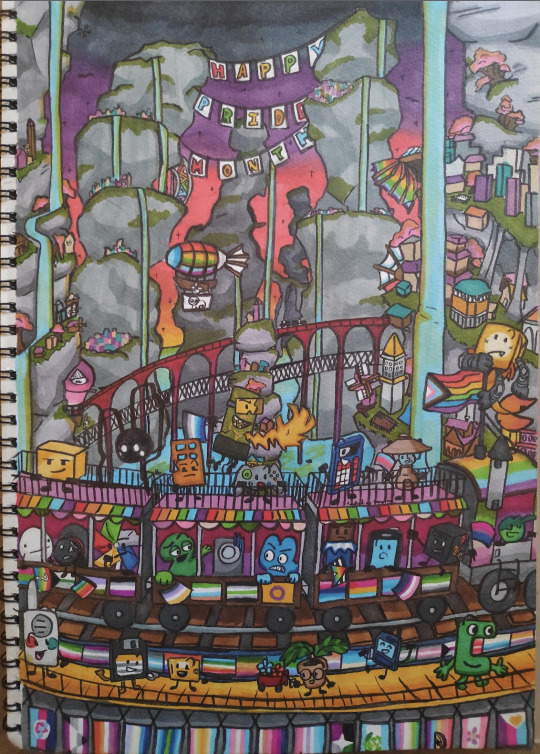
#osc#object show community#There are so many characters and fandoms I have to tag oh god what have I done#inanimate insanity#the nightly manor#love of the s*n#bfdi#EEE#TDOS#Cast 139#katyj98#Twilight orchards#BOTO#The object show movie#burner osc#manmade horrors osc#MOSS osc#The minute-ly object show#TWR osc#tnm#hfjone#greenys grand game#ppt2#I think thats it for the tags#I hate that I used these many oh golly#Happy pride everyone#my art
409 notes
·
View notes
Text
BOTO BLAST 💥💥💥💥
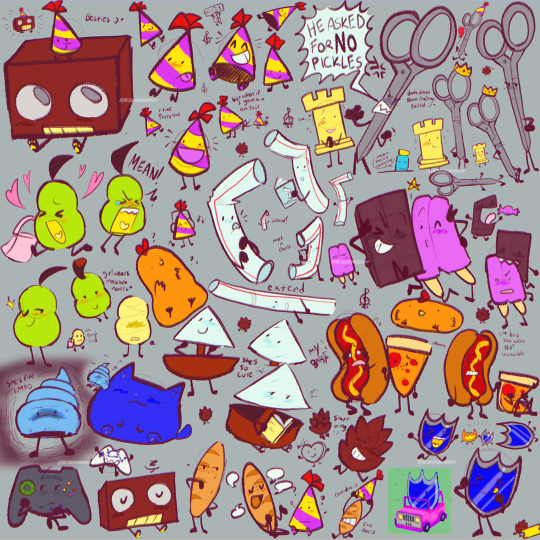
#my art#doodles#brawl of the objects#im not tagging all those characters are you kidding me#i love boto though i love boto so much most perfect object show#osc#boto
132 notes
·
View notes
Text

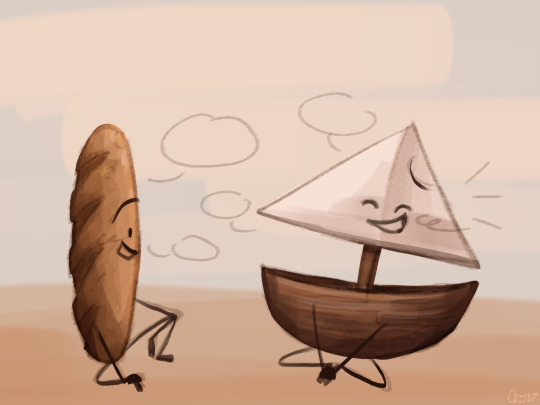
Guess who watched boto while was on vacation? That's right, me!! I liked a lot!!!

66 notes
·
View notes
Text

Welcome to the Goiky Subway
#art#bfdi#BFDIA#BFB#TPOT#inanimate insanity#ii#BOTO#brawl of the objects#ppt2#paper puppets take 2#object kerfuffle#tennis ball BFB#Rocky BFB#TPOT Lightning#ii balloon#boto slurpy#ppt2 caramel cube#object kerfuffle icepick
60 notes
·
View notes
Text



@skythealmighty
my art for the osc gift exchange!! i hope you like it :)
#dandy's doodles#osc gift exchange#shos#show host object show#aib#aib oodle#oso#oso crayon box#bfdi#bfdi announcer#boto#boto controlly#ii#ii mephone4#hfjone#hfjone airy#om#om calculator#bfdi two#bfc#bfc circle#shos o#ppt2#ppt2 gold ingot#bfdi four#lol a few of these characters i do not recognize outside of shos#but yeah this was very fun to draw!!#i wanted to use the colors in the show logo thingy for this (+ green)#and i think it turned out pretty nice B)#hope you enjoy!!!
703 notes
·
View notes
Photo



The Beautiful Boto
Also known as the Amazon river dophin or the pink river dolphin, the boto (Inia geoffrensis) is a species of toothed whale native to the Amazon and Orinoco river basins in South America. Because they reside mainly in rivers, lakes and mangroves, the boto occupies a large range; nearly 7 million square kilometers (435 thousand square miles). Despite being related to whales and dolphins, I. geoffrensis cannot tolerate saltwater and is only found in freshwater.
The Amazon river dolphin is the largest of the four river dolphin species, weighing in at 98-185 kg (215-407 lbs) and measuring 1 to 2.5 m (4-8 ft) in length. Males are larger than females, and are a bright pink to the females’ dull grey. A significant part of the length comes from the dolphin’s distinctive long snout, which is used to hunt for crustaceans and small fish. The boto’s body is designed to be highly flexible, which comes in handy when navigating through flooded forests. One adaptation in particular that makes I. geoffrensis stand out is the unfused neck vertebrae, which allows them to bend at up to a 90-degree angle. Botos also use echolocation to navigate murky river waters. which is enhanced by the large melon on their foreheads.
Breeding for the pink river dophin occurs between May and June, during the rainy season when flooding is at its peak. Males will fight for access to females, and will also perform courtship displays that involve carrying a number of objects-- like branches, fish, or even live turtles-- and slapping them into the water. Successful pregnancies last 11 months, and after giving birth mothers raise their young in the slow-moving waters of flooded forests. Weaning takes about a year, although mother-child pairs will often stay together for much longer. The average lifespan of the boto can be anywhere from 10 to 26 years, as they have no natural predators.
Outside the mating season, I. geoffrensis is a solitary creature. It’s rare to see groups of more than three at a time, and do not heavily defend set territories. However, they are very curious and have been known to readily approach canoes or play with debris in the water. Individuals have also been seen hunting fish in loose cooperation with other species like giant river otters (Pteronura brasiliensis). The bota is crepuscular, active mainly at dawn or dusk, and generally stay close to the surface of the water. Deep dives are rare, as they can only hold their breath for 110 seconds.
Conservation status: Hunting pressure and pollution, as well as dam building and deforestation, are major threats to the amazon river dolphin, which has been classified as Endangered by the IUCN. Conservation efforts are being made, but the species is difficult to keep or breed in captivity so most work is being done in the wild.
If you like what I do, consider leaving a tip or buying me a kofi!
Photos
Sylvain Cordier
Kevin Schafer
#amazon river dolphin#boto#cetacea#Iniidae#river dolphins#dolphins#toothed whales#mammals#rivers#river mammals#wetlands#wetland mammals#tropical rainforests#tropical rainforest mammals#freshwater fauna#freshwater mammals#south america#central south america#Amazon Rainforest#animal facts#biology#zoology
477 notes
·
View notes
Text
Wet Beast Wednesday: Amazonian river dolphin
It's the last Wet Beast Wednesday of the year. I started doing this little project to help myself get used to Tumblr and encourage myself to use it more often. That absolutely worked and I'm going to keep going. For my first ever WBW post, I discussed an adorable cetacean, so I'm going to call back to that by discussing a less adorable cetacean. Meet the Amazonian river dolphin, also known as the boto, bufeo, and pink dolphin because, well look at it.

(image id: an Amazonian river dolphin peeking out of the water. It is a large dolphin with a long, thin snout, bulbous head, and small dorsal fin. Its entire body is bright pink. end id)
River dolphins are dolphins the exclusively inhabit freshwater. There are several species (from four to six depending on your source) that are not all closely related. Probably the most famous of these is the Amazonian river dolphin Inia geoffrensis. They live in the Amazon, Orinoco, and upper Maderia rivers of South America. There are three subspecies: I. g. geoffrensis (the Amazon river dolphin), I. g. humboldtiana (the Orinoco river dolphin), and I. g. boliviensis (the Bolivian river dolphin, previously considered a separate species). There is also debate on whether the Araguaian river dolphin should be considered a subspecies of Amazonian river dolphin or a separate species. A common name for the dolphins found throughout Brazil is boto, though this is also used to refer to another river dolphin species, the tucuxi, as well as marine dolphins that occasionally enter fresh or brackish water. The amazonian river dolphins is the largest river dolphin, with males reaching 2.5 meters (8.2 ft) and 185 kg (408 lbs). Males are larger than females, averaging 16% longer and 55% heavier. The most famous feature of these dolphins are their color. while they are born grey, they lighten up as they age, eventually becoming pink. The amount of pink varies between individuals, with some being grey with pick spots and others going full Barbie mode. It's not clear why they turn pink and why some are pinker than others. Possible explanations include the distribution of capillaries under the skin, consuming large amounts of pink pigment through their diet (the same thing that happens with flamingos), and exposure to sunlight. Males are generally pinker than females, which may be due to them accumulating larger amounts of pink scar tissue while fighting over females. The dolphins get noticeably pinker when they are excited, which may be similar to a human blushing.

(Image id: a dolphin holding its head out of the water, seen from the front. Its mouth is partly open, showing a single row of teeth within. It is pink. end id)
Amazonian river dolphins are not known for being the prettiest cetaceans. With long, skinny shouts, lumpy bodies, non-distinct dorsal fins, and scarred, rough skin, they won' be winning many beauty contests. Maybe its for the best that they don't have very good eyesight. When living in a place as murky as a major river, eyes often aren't that useful. They instead navigate almost exclusively through echolocation. While not as powerful as they eyes of oceanic dolphins, river dolphin eyes are adapted to take in any available light, letting them see better in low-light environments such as a murky river under a canopy of leaves. The bulbous head contains the melon, an organ found in cetaceans used for echolocation. The melon can change shape, which may help focus the echolocation for different purposes. Part of the lumpy profile of the boto likely comes from their lack of blubber. Living in a tropical river means that river dolphins don't lose nearly as much body heat and therefore don't need the thick layer of blubber that helps streamline oceanic dolphins. They also don't need to be as hydrodynamic as they are a lot slower than oceanic dolphins. While slow, river dolphins are maneuverable and can rotate their flippers to turn themselves around without having to swim in a circle. In addition, unlike oceanic dolphins, the boto's neck vertebrate are unfused, allowing them to turn their head side to side. All of this helps the dolphins navigate and search for food in crowded rivers and flooded sections of forest. Another unique feature is the presence of whiskers on their snouts and cheeks, which are believed to help find food when poking around in the mud and aquatic plants. Yet another unique feature is the fact that they are heterodonts. This means they have different types of teeth. In the front of the snouts are the sharp, conical teeth found in other dolphins, but the uniquely have molar-like teeth in the back. These are used to crush hard prey, such as shellfish and turtles.

(image: a dolphin partially breaching out of the water while upside-down. Its large fins are in the air and its head is turned soits chin is facing the camera. end id)
The diet of the Amazonian river dolphin is the most varied of any toothed cetacean. At least 53 species of fish are part of its diet, though it prefers croakers, chiclids, tetras, and piranhas. As mentioned above, its molar-like teeth also allow it to crush through hard-shelled animals including bivalves, crabs, and turtles. They have been known to cooperate with tucuxi dolphins and otters to hunt, with the different animal working together to drive fish out of hiding places. The dolphins practice seasonal migration to follow their prey. During the wet season, they travel into floodplains, lakes, flooded parts of forests, swamps, and other places that are inaccessible during the dry season. During the dry season, they travel back into the main river. Males return to the river sooner that females and calves. The dolphins are less social than other dolphins, usually traveling alone or in groups of 2-4 members, though larger groups do happen. They do communicate with each other using whistles. During mating season, which usually happens in late June or August, they will congregate in large numbers. Males attempt to court females by carrying objects in their mouths such as branches and leaves and by nipping at the female's fins. Males also become aggressive and will fight with other females and with females that refuse their advances. These fight often leave the males covered in scars and nicks that can be used by scientists to identify them. Males will attempt to mate with as many females as possible. Gestation takes just under a year and calves are born in May and June as the wet season is beginning. The calves will nurse for a year and stay with their mother for two to three years. Females will not mate until their current calf has left, giving a mating frequency for females of between 2 and 3 years. Males may attack calves to force the mother to mate again. The life expectancy of wild dolphins is unknown.

(image id: a dolphin holding a leaf in its mouth. This may be part of a courtship display or play behavior. end id)
Amazonian river dolphins are known to be curious, playful, and not fearful of unfamiliar objects. This may because adults have almost no natural predators. Jaguars, caimans, and anacondas will attack them, but prefer targeting calves over adults. They are known to play with sticks, plants, small animals, and other submerged objects. They are also reported to follow boats and rub up against them and grab oars with their mouths. This may be a combination of play behavior and following boats to catch fish they scare. River dolphins have also been reported to approach humans, usually children, and examine or play with them. Botos feature quite a bit in the mythology and folklore of the peoples of South America. A common myth states that the boto can come on shore at night and take the form of a human, a boto encatado. While appearing as beautiful people, they need to wear hats as their blowholes stay on their heads. Male encantados come to shore to party and seduce women, but must return to the river before the transformation wears off. Many illegitimate children are fathered when an encantado comes to town. Female encantados seduce and bewitch married men. She will visit him on the anniversary of their meeting for seven years. On the seventh year, she turns him into a baby and places him in his wife's womb. Some stories say that they come from an underwater paradise called Encante and visit humans to experience hardships and parties. It is said that people who travel the river at night, especially women and children, may be kidnapped by the dolphins and taken to Encante, from which they will never return. Other stories say that the dolphins can make beautiful music and control storms. Killing one brings bad luck, and eating one brings worse luck, while making eye contact curses you with nightmares. Their body parts had magic powers and were sometimes used as fetishes (not that kind) by shamans.
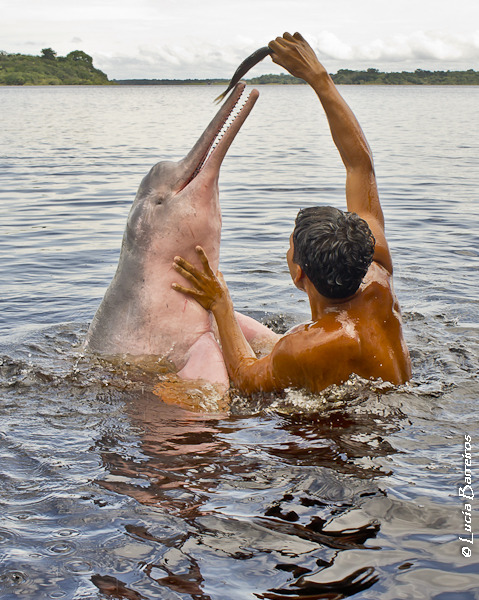
(image: a man with back to the camera hand-feeding a fish to a dolphin. end id)
Amazonian river dolphins are classified as endangered by the IUCN. Their largest threats come from humans. Overfishing leads to food loss and can lead to the dolphins becoming entangled in nets and drowning. Damming reduced their habitat and excess gold mining releases poisonous mercury into the water. Some are also killed to be used as bait. Fishermen have been known to kill dolphins who damage their equipment. Deforestation is also decreasing usable habitat. Amazonian river dolphins fare poorly in captivity and captive breeding is not considered a viable conservation method.

(image id: a dolphin calf being rescued by a conservationist. the person is holding it out of the water. The dolphin has the same body shape as an adult, but is grey instead of pink).
#wet beast wednesday#amazonian river dolphin#amazon river dolphin#river dolphin#pink dolphin#boto#dolphin#cetacean#freshwater biology#freshwater ecology#amazon river#biology#zoology#ecology#animal facts#cetaceans#boto encantado#encantado#image described#long post
73 notes
·
View notes
Text
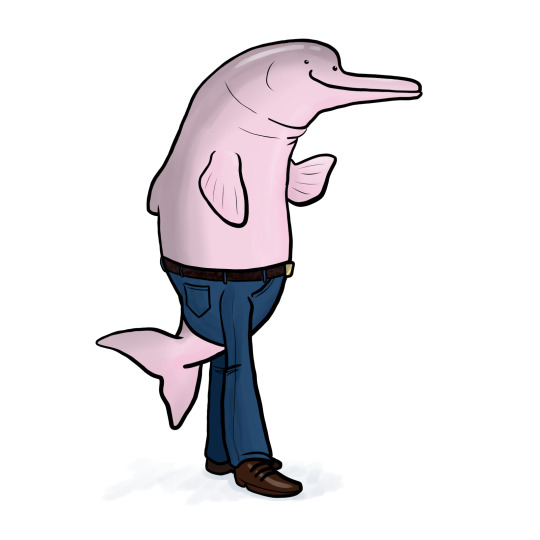
Alternative Mermay #14: Amazon River Dolphin with legs (and jeans)
159 notes
·
View notes
Text



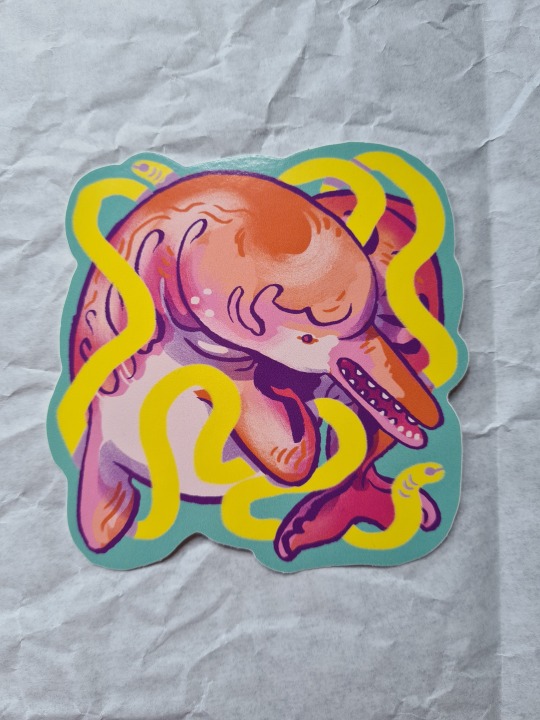
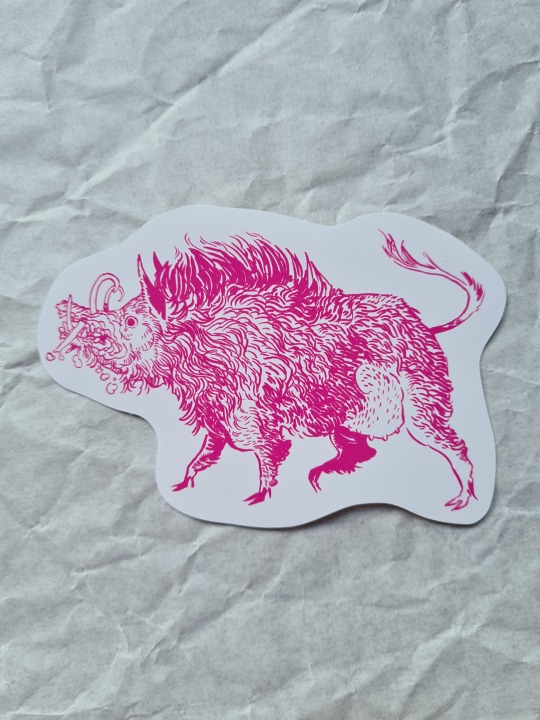
Did a wee shop update! New in my store are a tshirt with a lot of earwigs on it, plus big colourful stickers of my boar design and a boto dolphin. I'm also running low on Owl People book 1, Saint begone and boar t-shirts, so get them before they run out if you'd like one!
www.etsy.com/shop/Toadlett
#artists on tumblr#self promo#t shirt#stickers#boar#earwigs#insects#goblins#dolphin#boto#clowncore#goblincore
27 notes
·
View notes
Text

OBJECTOBER '23 DAY 4: Orange
Oops!, All Oranges!
#inanimate insanity#inanimate insanity invitational#boto#brawl of the objects#bfdi#bfb#aib#animated inanimate battle#ii oj#bfdi firey#bfb firey#bfb firey jr#bfdi pencil#bfb pencil#bfb basketball#boto pizza#boto big orange chicken#bfb coiny#bfdi coiny#aib chip bag#object show community#object shows#osc#objectober#objectober 2023#my art
71 notes
·
View notes
Note
If it’s alright could you draw Scissors and Rook BOTO holding hands and looking at each other lovingly ?
( I am coping with the fact that Antony originally wanted them to be canon before the story went in the direction that it did )
It's alright brah!!

Sorry this took so long, I was having problems drawing Scissors.
Tell me if you want me to change anything.
I need to watch BOTO fully, istg..
31 notes
·
View notes
Text

Boto Inia geoffrensis geoffrensis
Observed by tobler
Like the distantly-related river dolphins of Asia, the freshwater boto Inia geoffrensis of tropical South America's great river systems has tiny eyes; unlike the Asian dolphins, however, botos' eyes are quite functional and their vision good. Even so, in the dark and tannin-tinged waters of the rainforest river basins visibility is often quite poor. In addition to echolocation, aided by a bulbous, malleable melon, the long rostrum of the boto is covered with fine hairs for feeling around in the low-visibility waters. This photo shows the wispy hairs along the rostrum with wonderful clarity.
#Inia geoffrensis geoffrensis#boto#Cetacea#Iniidae#cetacean#dolphin#South America#Brazil#Amazonas#keep reading
31 notes
·
View notes
Text
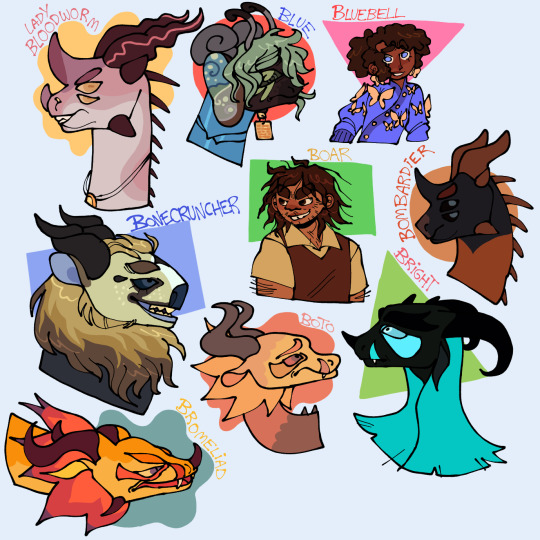
part five
first prev next
#wof#wings of fire#art#digital art#wof fanart#bloodworm#lady bloodworm#wof bloodworm#blue#wof blue#bluebell#wof bluebell#boar#wof boar#bombardier#wof bombardier#bonecruncher#wof bonecruncher#boto#wof boto#bright#wof bright#bromeliad#wof bromeliad#hivewing#silkwing#nightwing#rainwing#my art
38 notes
·
View notes
Text
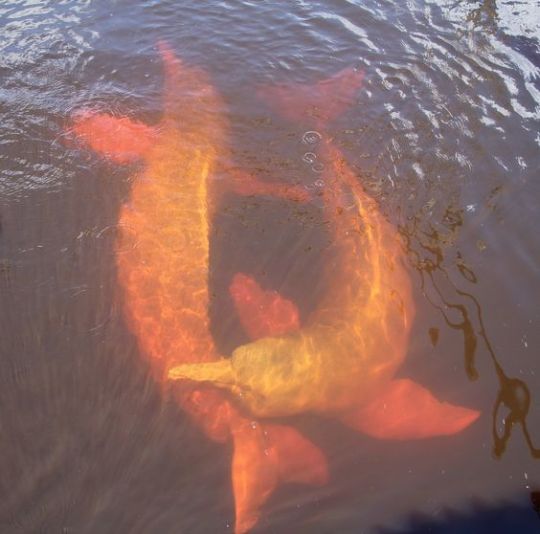
boto cor-de-rosa
204 notes
·
View notes
Text

A group of hosts!
#object shows#object show community#osc#battle for dream island#bfdi#battle for bfdi#bfb#the power of two#tpot#inanimate insanity#animated inanimate battle#aib#hfjone#brawl of the objects#boto#open source objects#oso#rosysart
64 notes
·
View notes
Photo

Amazon River Dolphin pup - it is known as the largest river dolphin and also for it’s pink coloration. Due to the murky waters of it’s environment, it depends much more on its sense of echolocation to detect prey rather than sight.
#boto#amazon river dolphin#river dolphin#dolphin#toothed whale#cetacean#land cetacean#creature#creature design#creature art#character design#character arc quiz#illustration#illustrator#watercolor#watercolor painting#painting#sketchbook#moleskine sketchbook#marine mammals#marine life#sea creatures#monster art#pink dolphin
193 notes
·
View notes